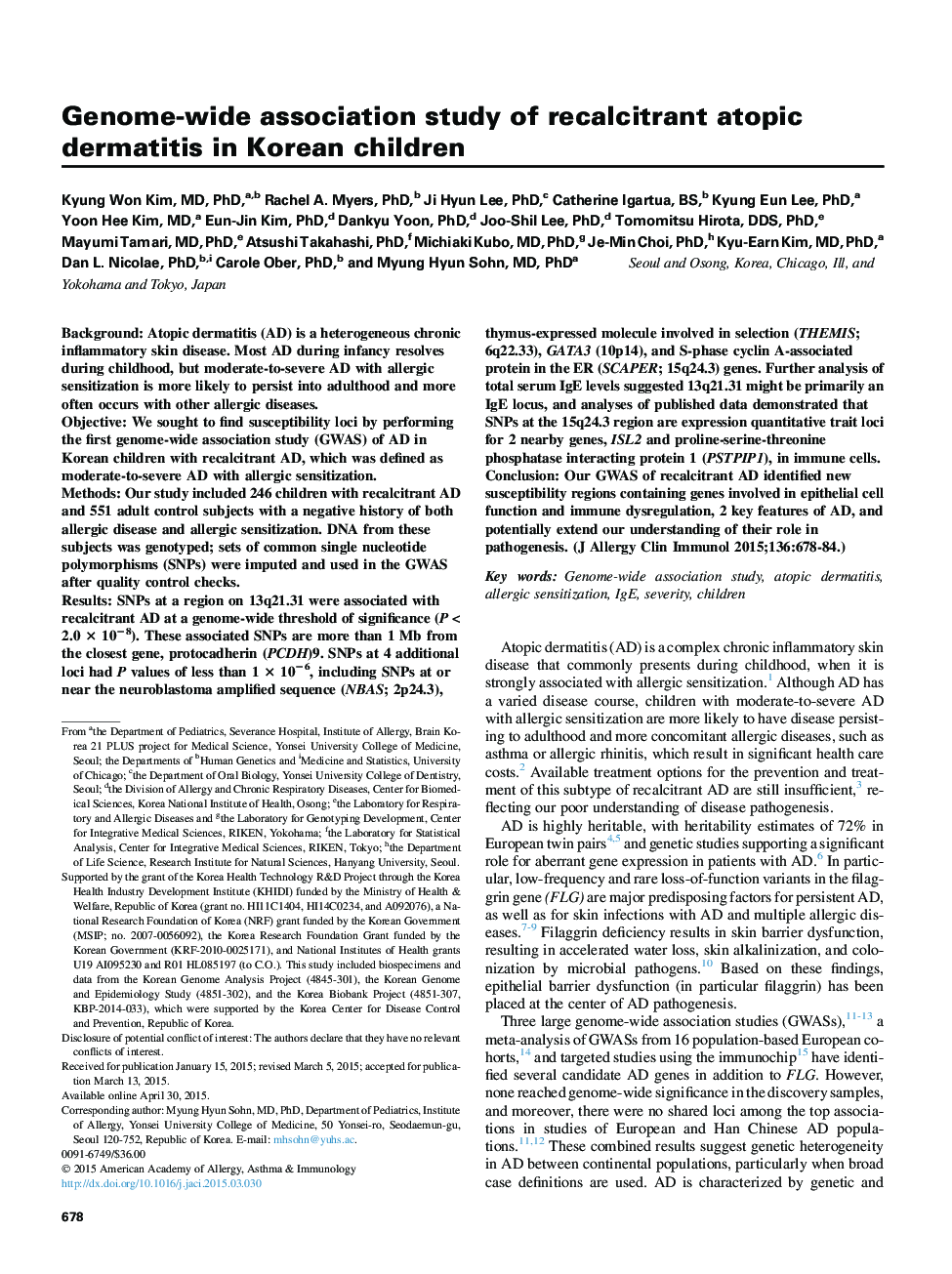| Article ID | Journal | Published Year | Pages | File Type |
|---|---|---|---|---|
| 6064521 | Journal of Allergy and Clinical Immunology | 2015 | 11 Pages |
BackgroundAtopic dermatitis (AD) is a heterogeneous chronic inflammatory skin disease. Most AD during infancy resolves during childhood, but moderate-to-severe AD with allergic sensitization is more likely to persist into adulthood and more often occurs with other allergic diseases.ObjectiveWe sought to find susceptibility loci by performing the first genome-wide association study (GWAS) of AD in Korean children with recalcitrant AD, which was defined as moderate-to-severe AD with allergic sensitization.MethodsOur study included 246 children with recalcitrant AD and 551 adult control subjects with a negative history of both allergic disease and allergic sensitization. DNA from these subjects was genotyped; sets of common single nucleotide polymorphisms (SNPs) were imputed and used in the GWAS after quality control checks.ResultsSNPs at a region on 13q21.31 were associated with recalcitrant AD at a genome-wide threshold of significance (PÂ < 2.0 Ã 10â8). These associated SNPs are more than 1 Mb from the closest gene, protocadherin (PCDH)9. SNPs at 4 additional loci had P values of less than 1 Ã 10â6, including SNPs at or near the neuroblastoma amplified sequence (NBAS; 2p24.3), thymus-expressed molecule involved in selection (THEMIS; 6q22.33), GATA3 (10p14), and S-phase cyclin A-associated protein in the ER (SCAPER; 15q24.3) genes. Further analysis of total serum IgE levels suggested 13q21.31 might be primarily an IgE locus, and analyses of published data demonstrated that SNPs at the 15q24.3 region are expression quantitative trait loci for 2 nearby genes, ISL2 and proline-serine-threonine phosphatase interacting protein 1 (PSTPIP1), in immune cells.ConclusionOur GWAS of recalcitrant AD identified new susceptibility regions containing genes involved in epithelial cell function and immune dysregulation, 2 key features of AD, and potentially extend our understanding of their role in pathogenesis.
